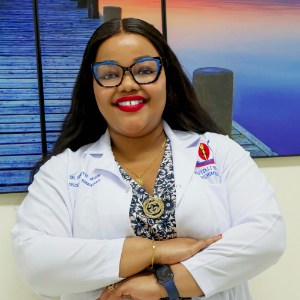Title : Assessment of radiographic outcomes of femoral fractures mobilized with SIGN fin nail at a tertiary hospital in Tanzania
Abstract:
Background: Surgical Implant Generation Network (SIGN) is widely used in Tanzania for intramedullary nailing in resource-limited settings. The newer SIGN Fin nail simplifies retrograde nailing by eliminating the need for proximal interlocking screws. We evaluate the effectiveness of SIGN Fin nail in achieving adequate radiographic alignment and satisfactory radiographic healing of femoral shaft fractures postoperatively
Methods: Patients with femoral shaft fractures treated with the SIGN Fin nail were randomly selected from the Muhimbili National Hospital Mloganzila SIGN nail Database. Only those with 6 to 12 weeks postoperative follow-up radiographs were included, while those without follow-up images were excluded. Fracture classification systems OTA/AO and Winquist-Hansen were employed. Fracture malalignment and radiographic healing were evaluated on anteroposterior and lateral final follow-up radiographs using an on-screen protractor tool and by assessing the presence of bridging callus and/or cortical remodeling across one cortex, respectively. Clinical and demographic data as well as associations between delayed radiographic healing and malalignment with subject/surgical characteristics were analyzed by frequencies and percentages
Results: Among 60 patients with femoral shaft fractures treated with Fin nail randomly selected from the database, 45 with follow-up radiographs between 6 to 12 weeks postoperatively were analyzed. Among them, 32 (71%) were male and 13 (29%) were female, with an average age of 32 years and an average postoperative follow-up duration of 18 weeks. The majority of femoral fractures (75.6%) were situated distally. Among the analyzed cases, 5 patients (11%) exhibited delayed radiographic healing; all of whom also suffered from other fractures in the ipsilateral limb, and 3(60%) of them were aged 60 years or older. Additionally, 4 patients (9%) presented with malalignment >10 degrees. Notably, all patients with radiographic misalignment had fracture comminution. Factors associated with delayed radiographic healing therefore included non-isolated femoral diaphysis fractures and advanced age, while severe fracture comminution was linked to malalignment
Conclusion: The SIGN Fin nail is recommended for femoral shaft fractures, particularly those located distally, in settings without fluoroscopy. It achieves good fracture alignment and healing comparable to standard SIGN nails. However it’s shorter surgical times and better cosmetic outcomes due to fewer scars make it preferable. This study is the first to evaluate both radiographic healing and alignment of femoral fractures treated with the SIGN Fin nail in Tanzania.
Audience learning points:
• The SIGN Fin nail is the preferred choice for fixing femoral fractures, especially distal diaphyseal fractures, in settings without fluoroscopy.
• Presence of additional fractures on the same limb may affect ambulation and lead to delayed union, necessitating long-term close follow-up.
• Factors such as fracture comminution and advanced age contribute to delayed union and fracture malalignment, requiring extended follow-up.
• Multidisciplinary collaboration between Orthopedics and Radiology enhances patient care and improves radiographic and clinical outcomes.



